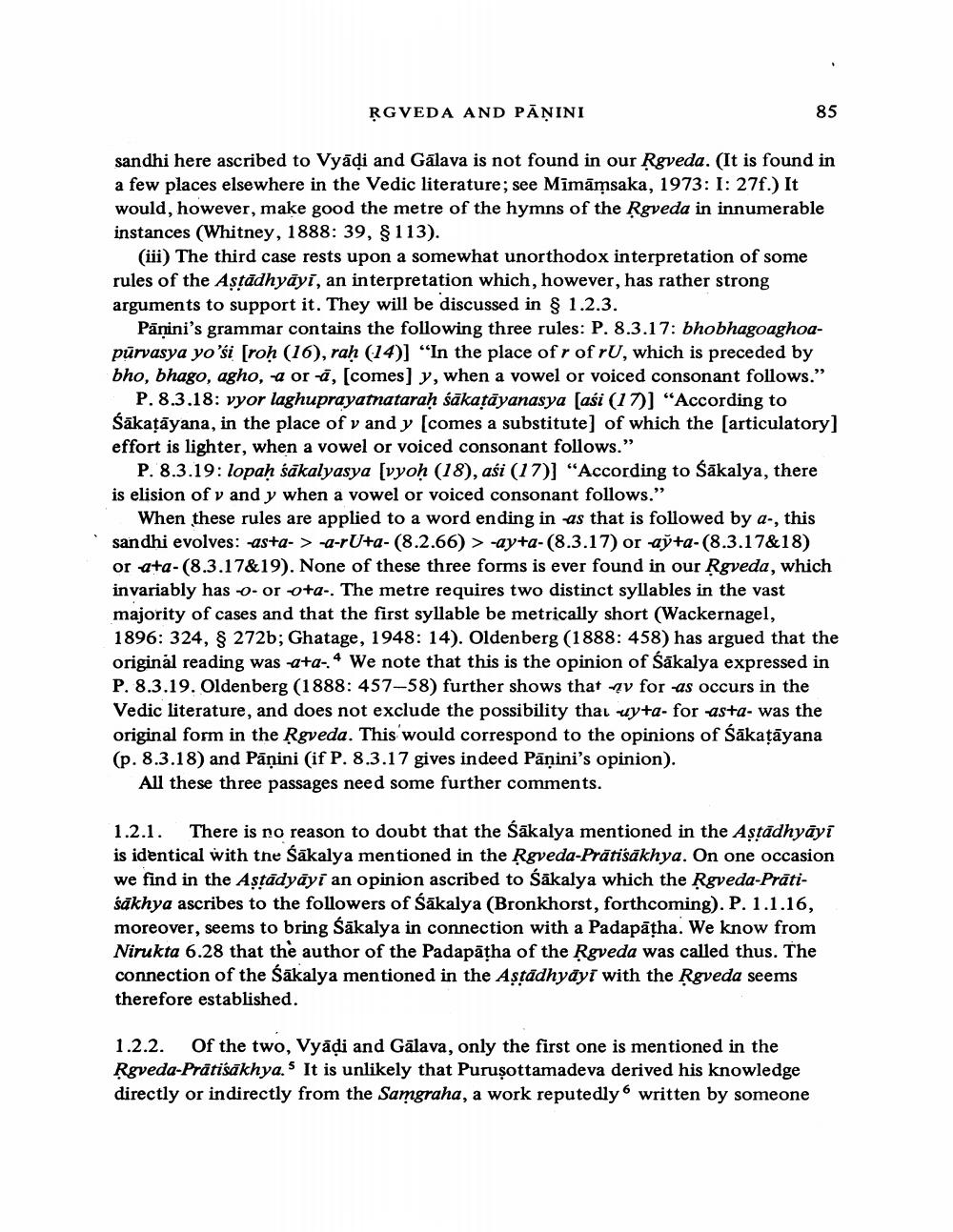________________
RGVEDA AND PĀŅINI
sandhi here ascribed to Vyādi and Gálava is not found in our Rgveda. (It is found in a few places elsewhere in the Vedic literature; see Mīmāņsaka, 1973: I: 27f.) It would, however, make good the metre of the hymns of the Rgveda in innumerable instances (Whitney, 1888: 39, 8113).
(iii) The third case rests upon a somewhat unorthodox interpretation of some rules of the Astādhyāyi, an interpretation which, however, has rather strong arguments to support it. They will be discussed in § 1.2.3.
Pāņini's grammar contains the following three rules: P. 8.3.17: bhobhagoaghoapūrvasya yo'ói [roh (16), raḥ (14)] "In the place of r of rU, which is preceded by bho, bhago, agho, a ora, (comes) y, when a vowel or voiced consonant follows."
P. 8.3.18: vyor laghuprayatnataraḥ śākatāyanasya (asi (17)] “According to sākatāyana, in the place of v and y [comes a substitute] of which the [articulatory] effort is lighter, when a vowel or voiced consonant follows."
P. 8.3.19: lopah sākalyasya [vyoh (18), aśi (17)] “According to Śākalya, there is elision of v and y when a vowel or voiced consonant follows."
When these rules are applied to a word en ding in as that is followed by a-, this sandhi evolves: asta-> -a-rU+a- (8.2.66) > -ay+a-(8.3.17) or aỹta-(8.3.17&18) or ata-(8.3.17&19). None of these three forms is ever found in our Rgveda, which invariably haso- or ota-. The metre requires two distinct syllables in the vast majority of cases and that the first syllable be metrically short (Wackernagel, 1896: 324, § 272b; Ghatage, 1948: 14). Oldenberg (1888: 458) has argued that the original reading was ata-4 We note that this is the opinion of Sākalya expressed in P. 8.3.19. Oldenberg (1888: 457-58) further shows that av for as occurs in the Vedic literature, and does not exclude the possibility that uy+a- for asta- was the original form in the Rgveda. This would correspond to the opinions of Śākațāyana (p. 8.3.18) and Pāņini (if P. 8.3.17 gives indeed Pāṇini's opinion).
All these three passages need some further comments.
1.2.1. There is no reason to doubt that the sākalya mentioned in the Aştādhyāyi is identical with the sākalya mentioned in the Rgveda-Prātišākhya. On one occasion we find in the Astādyāyi an opinion ascribed to sākalya which the Rgveda-Prātiśākhya ascribes to the followers of Sākalya (Bronkhorst, forthcoming). P. 1.1.16, moreover, seems to bring Śākalya in connection with a Padapātha. We know from Nirukta 6.28 that the author of the Padapātha of the Rgveda was called thus. The connection of the Sākalya mentioned in the Aştādhyāyi with the Rgveda seems therefore established.
1.2.2. Of the two, Vyāļi and Gālava, only the first one is mentioned in the Rgveda-Prātiśākhya." It is unlikely that Purusottamadeva derived his knowledge directly or indirectly from the Samgraha, a work reputedly written by someone




